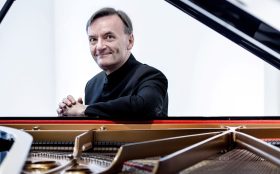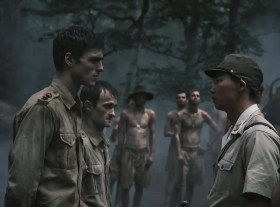Visitors in Yoko Ono exhibition at MCA, image via website. Photo Alex Davies.
At an event held by Tourism & Transport Forum (TTF) last week at the Museum of Contemporary Art Australia (MCA), Director Elizabeth Ann Macgregor quoted a BBC article in her keynote address.
She said: ‘I realised we really have made the leap into the heart of the nation when a BBC article on the final ashes test referred to the MCA’s Yoko banners proclaiming War is Over and commented: “Someone needs to tell Brad Haddin”!’
The arts trumping sport in the media is certainly an indication that times have changed.
Macgregor went on to add that, ‘Yoko Ono has been tweeting her passion for Sydney to her five million followers and pictures of her on the MCA terrace with the Opera House behind went around the world.’
While the official figures rattled off are meant to impress – and indeed they are the numbers that bolster the flow of dollars – it is this immersion into the popular conscious that is far broader reaching than any visitor statistic.
Macgregor delved into this idea with more detail making the very lucid argument that Cultural tourists are likely to be ‘highly networked’.
‘They don’t do packages – they like to craft their own programs and to do so they are avid users of technology and social media,’ she said. ‘We need to develop our online presence to become Australia’s 24 hour museum.’
The pendulum swing has been happening in cultural destination venues all over the world in what is called the “The Bilbao Effect” – a contemporary art museum that’s been instrumental in the regeneration of a city through cultural tourism. However, the simple application of how those buildings are disseminated to a global consciousness that must be worked into the masterplan.
The most famous example is the Guggenheim Museum Bilbao in Spain; in London it is the Tate Modern, Singapore has been redefining itself through culture, and Hong Kong, has two major developments underway – a contemporary art centre in the historic Central Police Station sponsored by the ritzy HK Jockey Club and the West Kowloon centre for the arts which includes a major art museum headed up by Australian Michael Lynch.
Macgregor added that in the Middle East, despite a patchy start, ‘We are seeing the largest investment in contemporary art as the Arab states compete to become world leaders in art tourism. In Abu Dhabi the Sadiyaat district is an island of outposts of major museums, from the Louvre to the Guggenheim. In Doha, the recent Damien Hirst exhibition is reputed to have cost over $30M. Sharjah has its more modest but more art world credible Sharjah Biennale. The amount of money being spent on buying contemporary art is mindblowing.’
But how does all this translate to Australia, a very different context?
Macgregor said: ‘The MCA is hardly going to be the main factor in bringing international tourists to Sydney. But as part of a mix…a contemporary art museum is indispensable.’
‘In all the attempts to emulate Bilbao, and there have been many, it has often been overlooked that Bilbao is within an hour’s flight of half the population of Europe… Clearly the Guggenheim effect will not necessarily translate to a country like Australia which has different challenges for cultural tourism. And MONA is very specific to the Tasmanian context’, said Macgregor.
‘As Australia’s museum dedicated to living artists, we have the possibility to respond to the changing demands of sophisticated cultural tourists. Excellence in online interaction is critical not least because excellence in online presence drives higher attendance.’
‘Australia needs this even more because of the distance – we need to be able to promote ourselves in innovative and engaging ways, to attract attention among the clamour of the internet.’ She makes a great point. So when we think of ‘networking’ it is not just a matter of hooking into local industry drivers and tourism operators but to think virtual.
Macgregor said: ‘When we opened last year, the London Daily Telegraph claimed that Australian art is the next big thing and that the MCA is the place to see it, the Tate of the Southern hemisphere.’
That is not a statement driven by official figures released by government departments; that is the sort of commentary driven by social media.
Macgregor added, ‘Last month, the MCA was cited in the New York Times article “36 hours in Sydney” (which) claimed ‘Sydney is the pre-eminent place for art on the continent’ alongside a picture of our new extension. This proves that culture is now an integral element in tourism to Australia.’
What it does prove is that we are no longer just thought of as knife-wielding Crocodile Dundees, and the place of koala bears, bush fires, beaches and coral reefs. These images remain constant but another has been added.
Part of this changing landscape is that art museums are no longer the hallowed halls of the past where a certain reverence held visitors at arms length. The gallery cafe and shop have become key elements in attracting tourists.
Macgregor spoke of the museum as social space that has been ‘critical in the rise of “relational tourism” where people are looking for opportunities to interact with others…over and above the typical restaurant experience. Indeed meeting people is one of the reasons that many single travelers visit galleries.’
While there has been a culture shift among tourists, there has also been a culture shift within government. With Tourism, Major Events, Hospitality and the Arts all under one portfolio – the first time tourism and the arts have been packaged together since 1976 – Minister, The Hon George Souris, said that it has ‘allowed a whole government approach’.
Souris presented a head-spinning line up of numbers that attest to this growing industry, speaking across his portfolio saluting the performing art and sport alongside the success of Sydney’s International Art Series, the jewel of cultural tourism in NSW.
His speech was punctuated by the blasts of a cruise ship’s horn as it pulled away from Circular Quay. Souris said, ‘there is a different one of those every day and we time the departures when we can to coincide with interval of the Sydney Symphony Orchestra or Opera Australia’.
While I think the marketing heads of those organisations attending the event would prefer bums-on-seats than a pretty intermission parade, progress is being made. Souris admitted that ‘the ball had been dropped’ since the Sydney Olympics but that ‘we are still building on that’.
Bruch Baird, Chairman of TTF said of Souris, ‘He understands it, he gets it, he is putting money into it.’
Souris said that 197 cultural events have been secured under the watch of this government, which have boosted the economy by 1.3 billion dollars. He added, ‘Since the art series commenced more than 80 million dollars has been generated for NSW.’
Souris admitted that ‘It is hard to come up with these figures’, but what the findings show is that cultural tourists are high spenders – so that means governments are interested in making that happen.
Macgregor said that exhibitions such as the current Yoko Ono and the forthcoming Chuck Close exhibitions draw, ‘exactly the kind of visitors we have been talking about – sophisticated, high spenders and opinion formers.’
She added, ‘In the Australian context, Sydney has the advantage of having the two institutions which, by working together from different curatorial perspectives, can develop complementary programs and offer the interstate visitor a rich and varied art experience.’
What it all says is that through programing, partnerships and technology our cultural institutions will continue to finds its voice within international media – as Yoko said ‘War is over’.
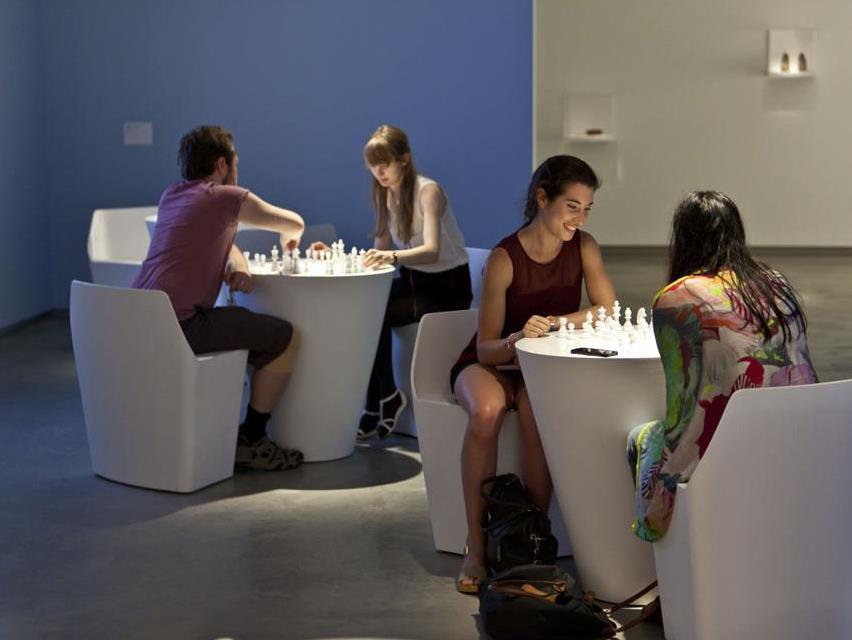
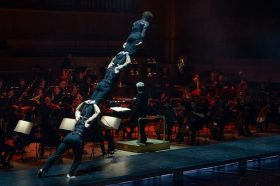
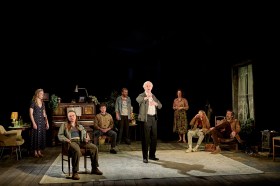
_Encounters-in-Reflection_Gallery3BPhoto-by-Anpis-Wang-e1745414770771.jpg?w=280)
